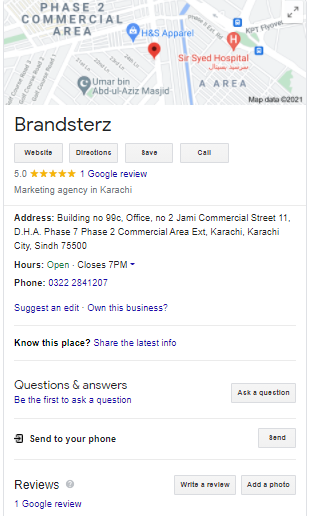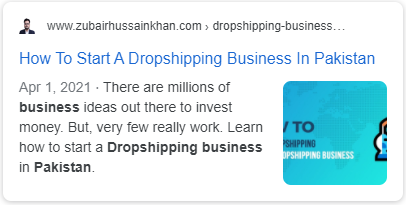For any local business to thrive, you need a constant flow of leads that would make your business successful. Conventionally, most businesses rely on getting their businesses to their prospects through traditional advertising media. Some of which include; newspapers, local pages directory, and TV advertising.
That was until the advent of the internet. A lot of businesses now rely on the online presence of businesses to get leads. The more leads a local business gets, the more the chances of conversion of the leads to customers.
If you are an experienced digital marketer, you can choose to rely on organic SEO campaigns to get leads to your local business. Sometimes, you can even turn to PPC platforms like Google Adwords, which can make you break the bank. However, the best option for local businesses is a well-planned Local SEO campaign.
In the course of subsequent paragraphs, we would be elucidating on a complete beginner’s guide to local SEO for your business. Without further mouthing, let us delve into our guide on how to optimize your business for local search.
What is Local SEO?
Local SEO can be defined as the process of improving the search appearance of your local business for certain queries. The businesses that usually need a local SEO campaign are brick-and-mortar businesses. When you improve your local SEO for your brick-and-mortar business, you can improve the organic search traffic that you get from customers in nearby locations.
Most of the top search engines like Yandex, Bing, and Google mostly rely on signals such as; social profile page citations and local content that serve the most local results to the user.
With local SEO, a business can decide to use their search engine rankings to position their products and services to prospects who are making search queries.
I would like to state that online businesses do not need local SEO. For instance, a blog that does not have any brick-and-mortar extension of its online business does not need any local SEO campaign.
For example, my blog zubairhussainkhan.com does not need any local SEO campaign. They have no physical reflection of their business; as such do not need a local SEO campaign.
For does that need one? The next couple of paragraphs would deal with the best practices that would help you optimize your brick and mortar business for local search.
How to optimize your Brick and Mortar Business for local SEO
1. Optimize your Local business for Google My Business

Did you know that in the world of SEO,
Google My Business has turned out to be the Crème de la crème of local search? The reason for this is that Google prefers to share content that it can verify. By optimizing your website for Google My business, you meet with Google’s local search standards and get found in local search results.
Here is a breakdown of how to optimize your business for google my business.
- Create a verifiable Google My Business page
- Make use of Google Posts within the account
- Encourage your business leads that have converted to customers to share their reviews online.
- Give honest responses to your reviews, specifying the location.
If Google finds your Google my Business page authentic, they would reward your business with a custom sidebar space in the Google search engine local search.
Also, endeavor to respond to your reviews honestly and keep your contact information up to date. In addition to your contact information, you should also keep the operating hours of your business up to date.
2. Engage your Leads and Prospects on Social Media and add posts to Google My Business
Google has a lot of indexing priority for social media content. After you create and optimize your Google My Business page, the next step would be to share the page on your social media handles. These efforts would give your business some social media signals as prospects interact with your Google My Business page.
3. Make Sure that your Name, address, and Phone Number are consistent online
Google considers inconsistency in data that relates to your business as a huge let-off. You have to put in some little effort to make it easy for search engines and business prospects to locate your business.
All you have to do is to have some quality NAP syndication. NAP in local SEO means Name, Address, and Phone number (with the area code attached). The best practice in NAP syndication is to have a crawlable HTML text with your NAP details attached to your site.
Always endeavor to avoid making the mistake of your NAP with images. Bear in mind that search engines like HTML text cannot crawl images.
The best location for your NAP HTML file is the footer or header of your business website.
4. Optimize your Title Tags, your URL, headers, Meta Description, and content

In your content creation strategies, you should make your blog posts to be able to target a geographic search phrase. Your posts should be optimized to be an opportunity for your brick-and-mortar business to be found on SERPs (Search engine ranking positions).
Anytime you write content, you need to optimize the content so that search engines would be able to spot high-volume keywords in your blog post URL. This would get your brick-and-mortar business more leads as it gains more online exposure.
Your blog post URL is also not the only place that you should target placing high-volume keywords. You can also optimize your header, meta description, and article body for high-volume keywords.
If you are having some challenges with creating geo-targeted content, consider adding customer success stories and case studies.
5. Perform some Local SEO audit on your site
When you have put down some basic local SEO effort, you might be tempted to put your foot on the brake.
However, local SEO campaigns are an ongoing and intuitive process. It would be nice to perform SEO A/B testing to see what sticks as these you perform a comprehensive audit to see where your site stands and see what you need to tweak to achieve your local SEO goals.
Here are some platforms that are best fit for performing a local SEO audit for your site:
- Google Search Console Audit- endeavor to have a website that is crawlable by search engines. Make sure that your blog or business site does not have errors that would lead to errors in indexing.
- Google My Business Audit– you need to perform this audit to be able to tell if your Google My Business page is appearing in search engine ranking positions.
- Perform an On-page SEO Audit- This audit is used to tell if your site is following the best practices that accommodate all the necessary on-page SEO elements.
6. Work on Your Internal Linking Structure
On a quick note, the external links that point to your site have their own benefits to your local business. All the same, it is nice to work on the internal linking structure of your blog, as this would boost your local SEO rankings.
Here are some reasons why internal linking is important for your local business site:
- Your website would have good navigation, as google would find it easy to identify cornerstone content in your site.
- It aids the architecture of your site
- Internal linking makes it easy to distribute page authority and ranking power among your website pages.
7. Add Location pages to the website of your Brick and Mortar Business
If you own a brick-and-mortar business, it would be advisable for you to create location pages for it. Location pages are pages that provide your leads or prospects with your name, phone number, address, store number, shop descriptions, and testimonials from happy customers.
Try not to duplicate content across multiple location pages on your site. It would be better to create a very descriptive about us page for a particular location page for your brick-and-mortar business. It would also be a huge bonus for you if you add an about us page on your respective location pages.
8. Create Local content
Google and its algorithms are very smart. It is become difficult to run cheap content creation schemes that would make sites escape the scrutiny of Google’s content standards.
The best way to be on the safe side is to write for your prospects and leads and not search engines. It is better to narrow down your content to cover local or industry news in light of doing this. This would give you more organic visitors from your local audience.
Read Also

